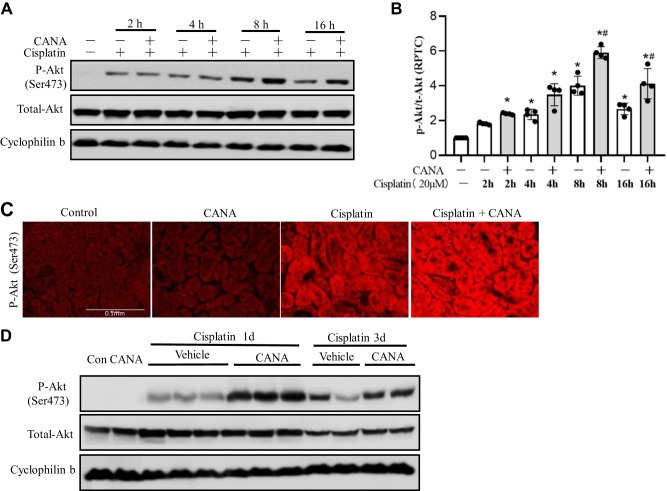Fig. 6.
Canagliflozin (CANA) increases AKT activation in cisplatin-induced renal injury. A and B: rat kidney proximal tubular cells (RPTCs) were incubated with 20 μM cisplatin in the absence or presence of 15 μM CANA for 0–16 h. Whole cell lysates were collected for immunoblot analysis of phosphorylated (p-)Akt (Ser473) and total Akt with cyclophilin B as an internal loading control. A: representative immunoblots. B: densitometric analysis normalized to cyclophilin B. Data are expressed as means ± SD; n = 4. *P < 0.05 vs. the control group; #P < 0.05 vs. the cisplatin-treated group without CANA at the same time point. C and D: C57BL/6 mice were administered with CANA (20 mg·kg−1·day−1) orally for 8 consecutive days, and intraperitoneal injection of 30 mg/kg cisplatin or saline was given on the seventh day of treatment. Mice were euthanized at 1 day (1d) or 3 days (3d) after cisplatin injection. C: representative immunofluorescence image of p-Akt (Ser473) at 1 day after cisplatin or saline treatment (scale bar = 0.1 mm). D: representative immunoblots of p-Akt (Ser473) and total Akt with cyclophilin B as an internal loading control.

